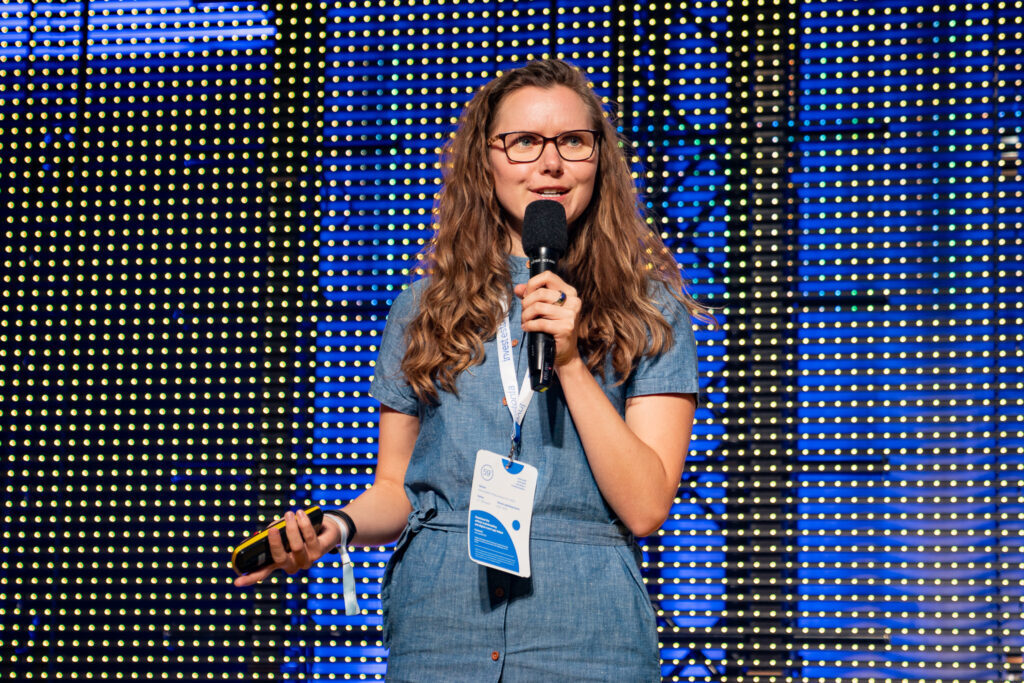I still remember the excitement from the hackathon last September when they announced that my project was among the ones chosen to be part of the Accelerate Estonia. I was over the moon! Now looking back, I would like to share about the journey and where we ended up.

Materjalivoog (in English Materials Flow) is all about fostering a circular economy. The problem we’re solving is about manufacturing waste and leftovers. Currently, most of the leftovers are not (re)used to the maximum potential. Even though there are companies working hard to reduce leftovers and finding a solution, there is a lack of systemic approach. At the same time responsible and environmentally friendly production is gaining more popularity together with making products from recycled or waste materials.
The aim of Materjalivoog is to bring together those two aforementioned parties – manufacturing companies with leftovers and companies needing input materials. But it has to be easy and motivating, as well as competitive with time, bureaucracy, and quality.
At first, we started experimenting with an approach to build a database based on the leftover materials: making the information public on what are the materials available among manufacturers. To do that, we contacted more than 70 Estonian manufacturers as well as industry associations. We obviously didn’t get answers from everyone, but the ones who did answer were very supportive. Some were saying that they’ve been looking for this kind of solution for years. Very few companies said they were not interested in this either because it was not their priority or they just didn’t generate any useful leftover materials.
We visited numerous companies and saw their production processes and excess materials with our own eyes. It was very eye-opening and we understood shortly that the way how we are going to describe the materials is going to be the key. Eventually, we had 12 companies saying yes to participating in our pilot. We were ready to start collecting initial data on the materials: quantities, qualities, materials, occurrence, etc.
Our eyes were on building the database, but the Advisory Board of Accelerate Estonia wanted to ensure that there’s a market for the database we were creating. Therefore we started looking for potential buyers of the leftover materials. We issued a campaign and shared it through social media, associations, and organisations. Overall around 50 people or companies signed-up and expressed their interest in using these types of materials as their input. We got a re-confirmation that the descriptions and profiles of materials are crucial. This might seem a lot of work for manufacturers in the beginning, but the more detailed information they provide the easier it is for the buyer to decide if the material suits them.
As we were moving on with companies and mapping the interest, the more and more the environmental lawyer in our team was bringing our attention to legal aspects. Currently, the legal framework doesn’t support a fast, comfortable, and timely way of handing over leftover materials between manufacturers. The more we looked into the more we realised that this is the step number one we need to take: creating the necessary legal space.
Luckily the Ministry of Environment was supportive and understood that the legislation is currently a bottleneck for Materjalivoog implementation as well as for circular economy implementation on a broader scale. Therefore we are thrilled to move forward from Accelerate Estonia together with the ministry. We have agreed to embark on the journey on changing the law and creating enabling conditions for waste becoming a resource again. This means that in a while Estonian manufacturers will have a chance to use leftover materials as a resource in an easy, motivating, and fast way.
I would like to thank all the organisations, public institutes, companies, individuals and team members who were on this journey with me, supporting me with knowledge and experiences.
Thank you, Accelerate Estonia for providing this space to experiment, grow, and envision a time when Estonia breathes circular economy.


